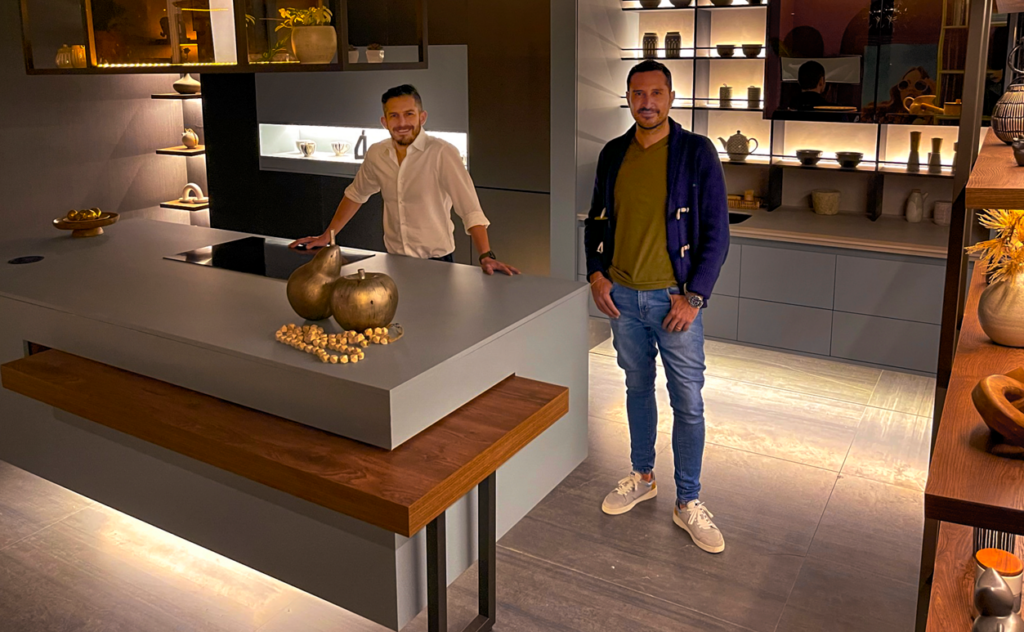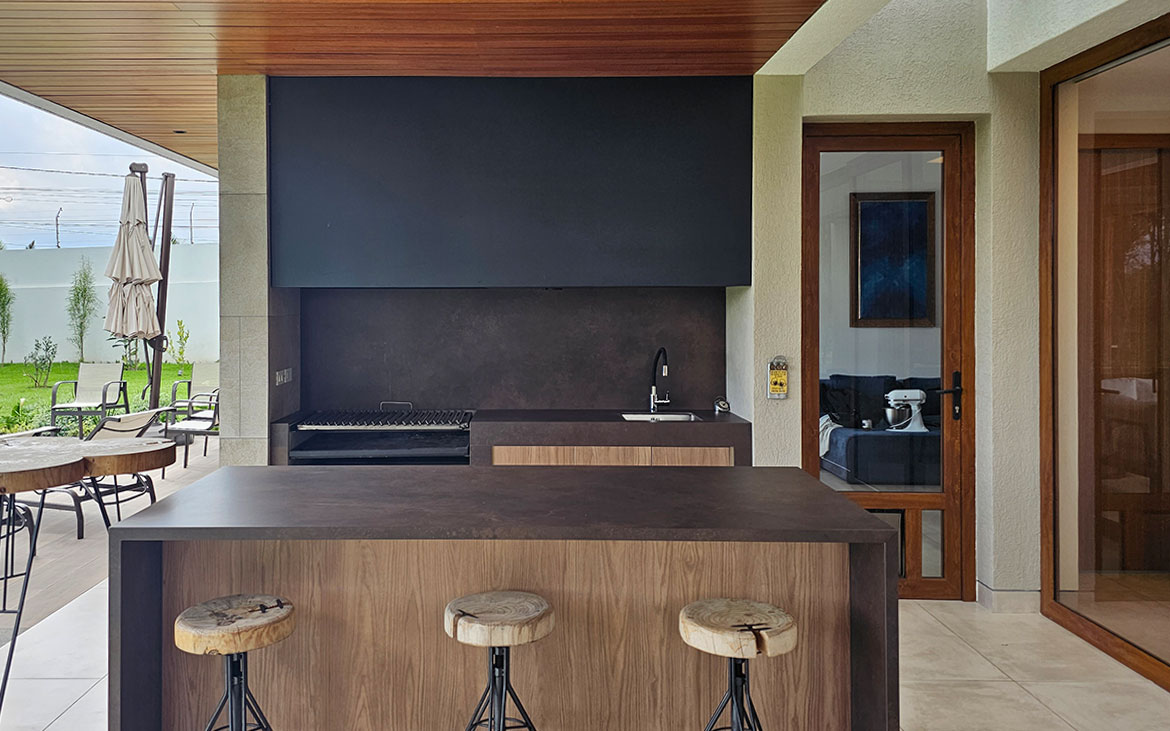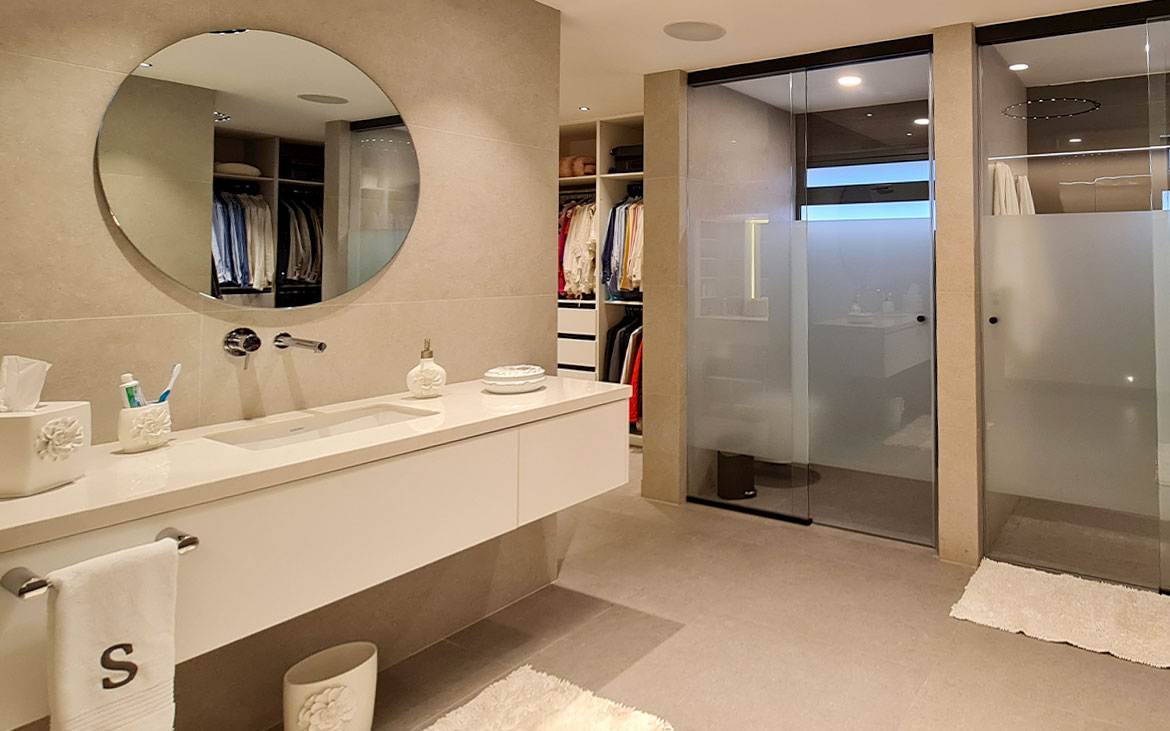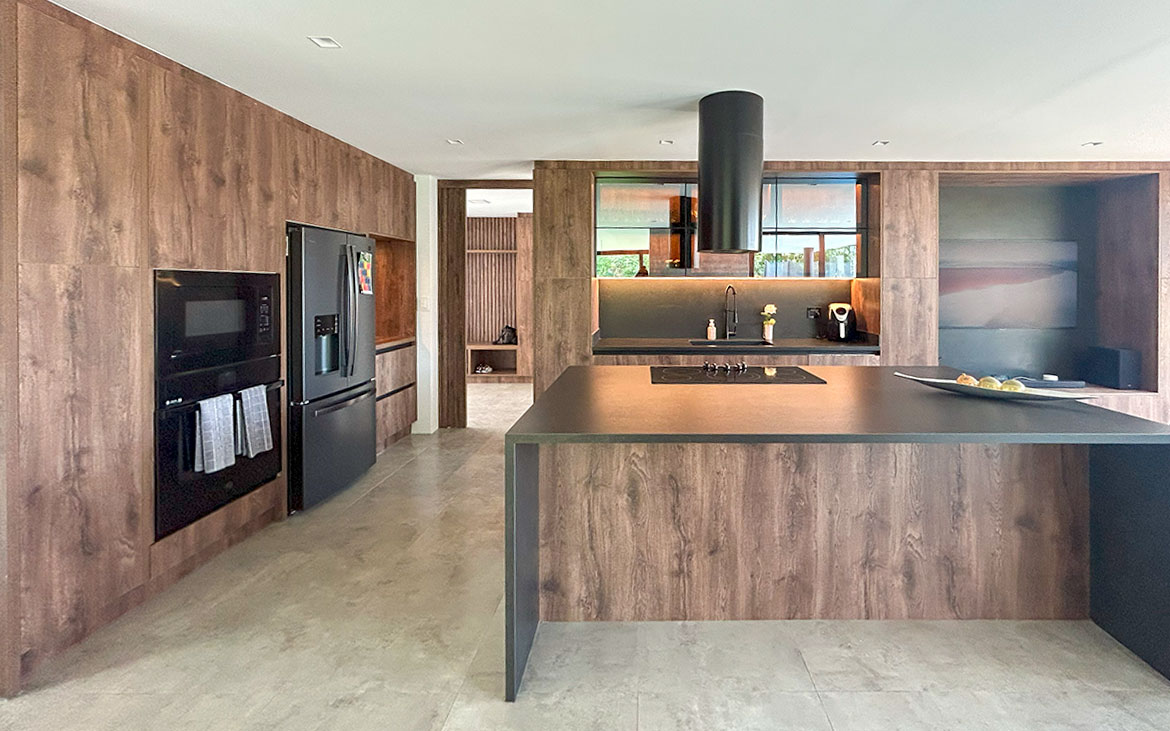Organic architecture is a design approach that focuses on creating buildings that integrate with the natural environment and meet the needs of users in a sustainable way. In this article, we will explore how our GRAVITY kitchen was developed from organic architecture and how its design is in line with the pillars of this type of architecture.
In the context of the kitchen, organic design can help create spaces that are functional and aesthetically appealing, while remaining environmentally friendly and adapting to the needs of users.

At Milani we specialize in the design, manufacture and installation of kitchen, bathroom and closet furniture, projects that we have developed over the last 5 years. That year we took on a new challenge in our participation in Casas Project 2023, event developed by Casas Magazine, where architects, designers and interior designers come together to stage their creativity in a space that is once again the best showcase of the construction industry.
As an ally to create an unusual concept, we chose the Collectif+3 architecture studio made up of Architect Sebastián Luzuriaga and Interior Designer María Fernanda López who, thanks to their experience in creating timeless spaces linked to organic architecture, were the basis for the creation of this exhibition.
Pillars of organic architecture
- One of the main characteristics of organic architecture is the integration of design into the natural world. In a kitchen designed with this philosophy, this could include the use of natural materials such as wood, stone and glass to create a feeling of harmony with the surroundings. It could also include incorporating natural elements such as sunlight, scenic views, and greenery into the design. For example, a kitchen designed with organic architecture could have large windows that allow in natural light and a view of the surrounding landscape, or it could have a green wall to integrate natural elements into the interior design.
- Another important pillar of organic architecture is consideration of the environment in the design. This means that the kitchen is built taking into account the climatic and geographical conditions of the place where it is located. For example, if the kitchen is located in a warm, humid area, the design could include features that help keep the space cool and ventilated, such as installing windows that allow in fresh air. Likewise, if the kitchen is located in a cold area, an efficient heating system could be included to reduce energy consumption and keep the space warm and cozy.
- Sustainability is another key aspect of organic architecture. A kitchen designed with this philosophy must be sustainable in terms of energy consumption and use of materials. This could be achieved by installing energy efficient appliances and choosing sustainable materials for the construction of the kitchen. For example, wood certified by the Forest Stewardship Council (FSC) could be used, which guarantees that the wood has been produced responsibly and sustainably.
In addition to these basic pillars of organic architecture, a kitchen designed with this philosophy must also satisfy the needs of users. This means that the design must be functional and adapt to the needs of the people who will use it. For example, adequate storage space and efficient arrangement of appliances could be included to facilitate food preparation and cleanup.

The user and organic architecture
In terms of aesthetic design, a kitchen designed with organic architecture can look natural and elegant. Natural materials such as wood, stone and glass can be used to create a feeling of harmony with the environment, and natural elements such as light and plants can be incorporated to create a relaxing and welcoming environment. In addition, you can play with lighting to highlight the architectural elements and materials used in construction.
In short, a kitchen designed with organic architecture can be a combination of functionality, beauty and sustainability. When integrating the design into the natural environment, consider the climatic and geographical conditions of the place, use sustainable materials and energy efficient, and meet the needs of users, a kitchen designed with this philosophy can be a perfect addition to any modern home. Furthermore, by encouraging the use of natural and sustainable materials, organic architecture can be a way to contribute to caring for the environment and create a more sustainable and livable world for future generations.[ish_divider]





